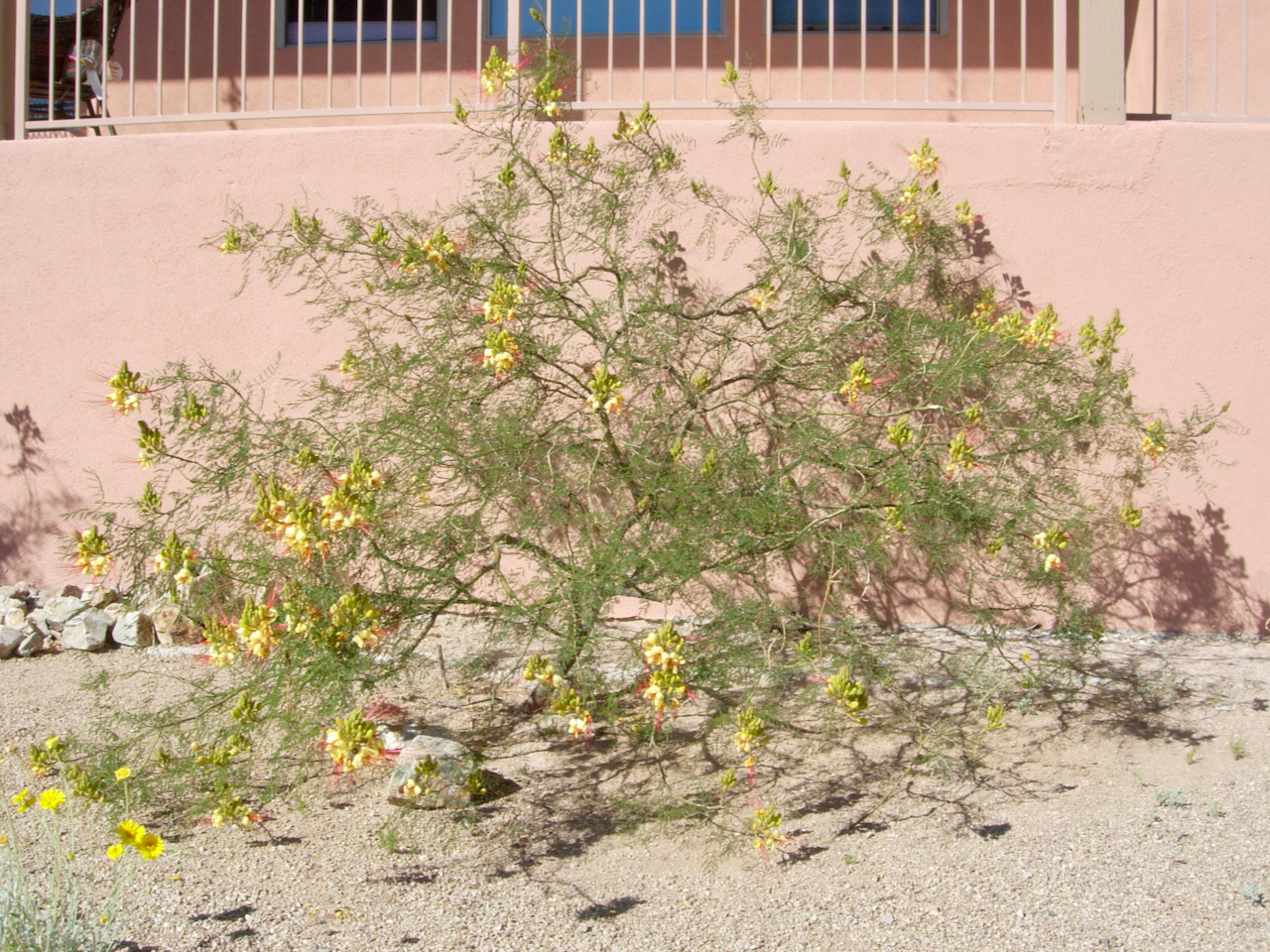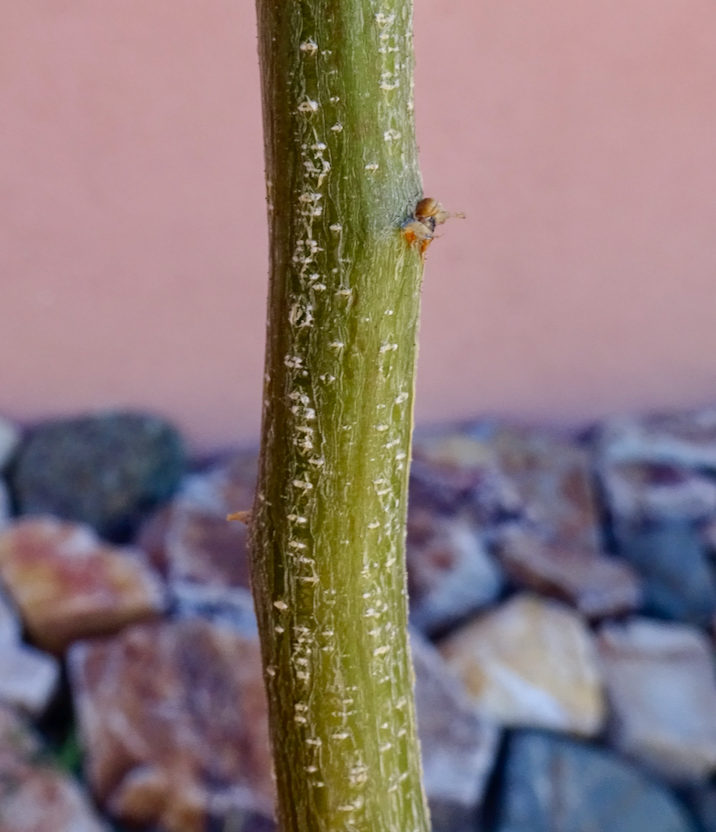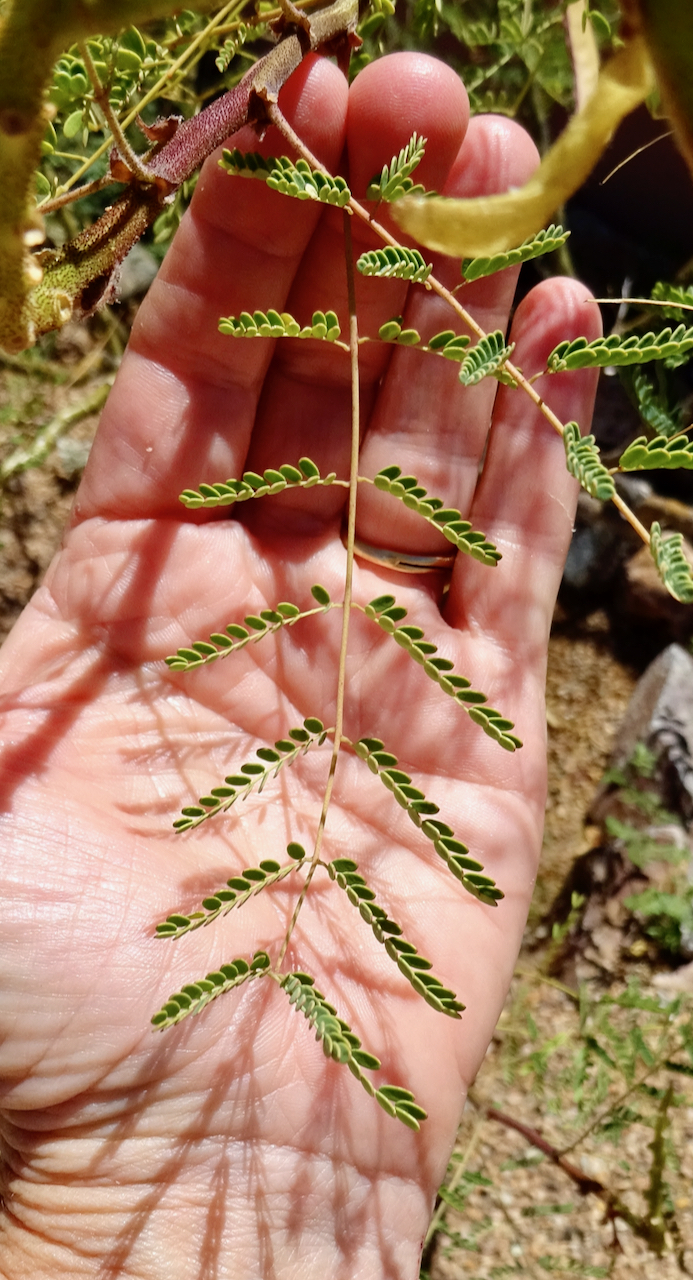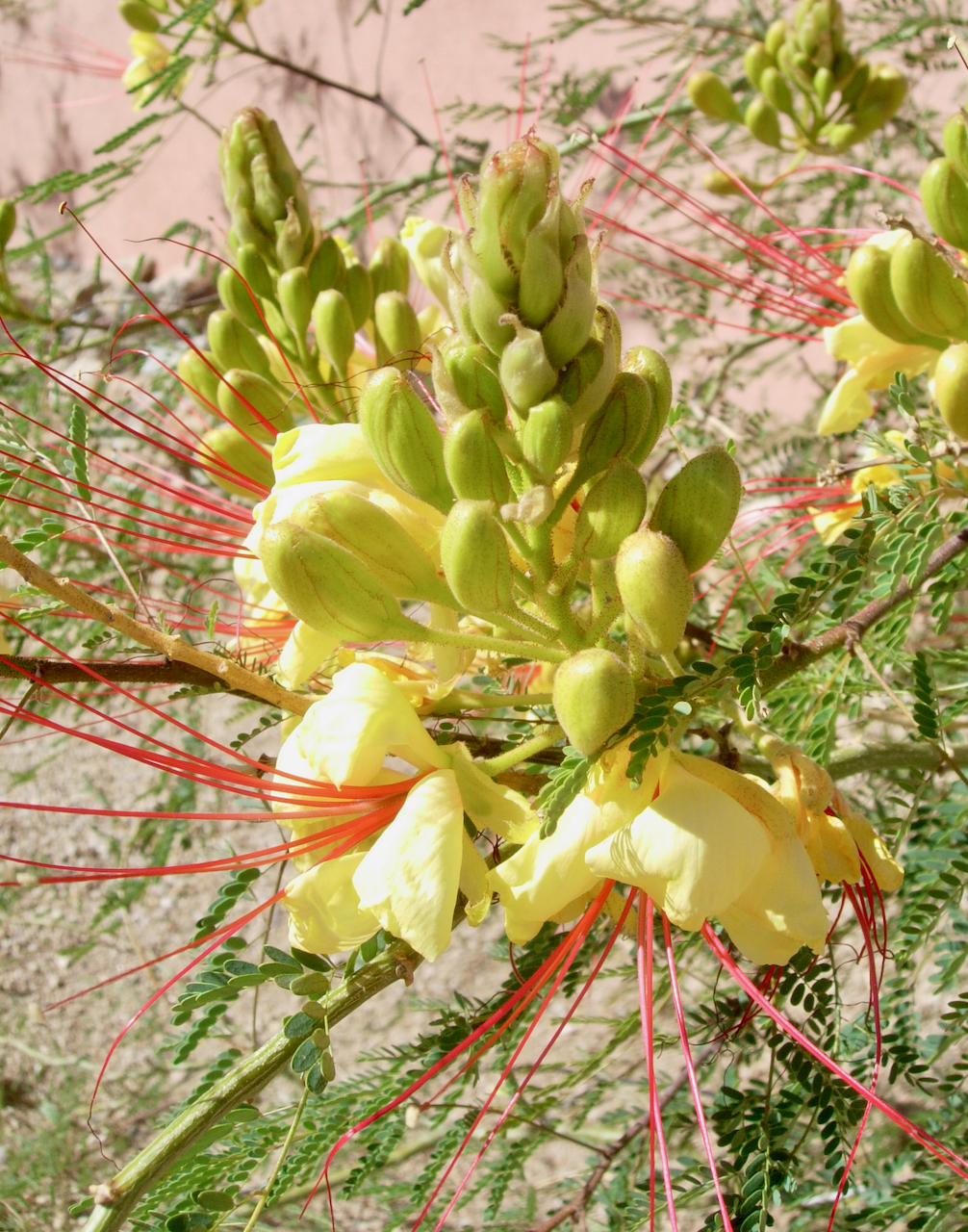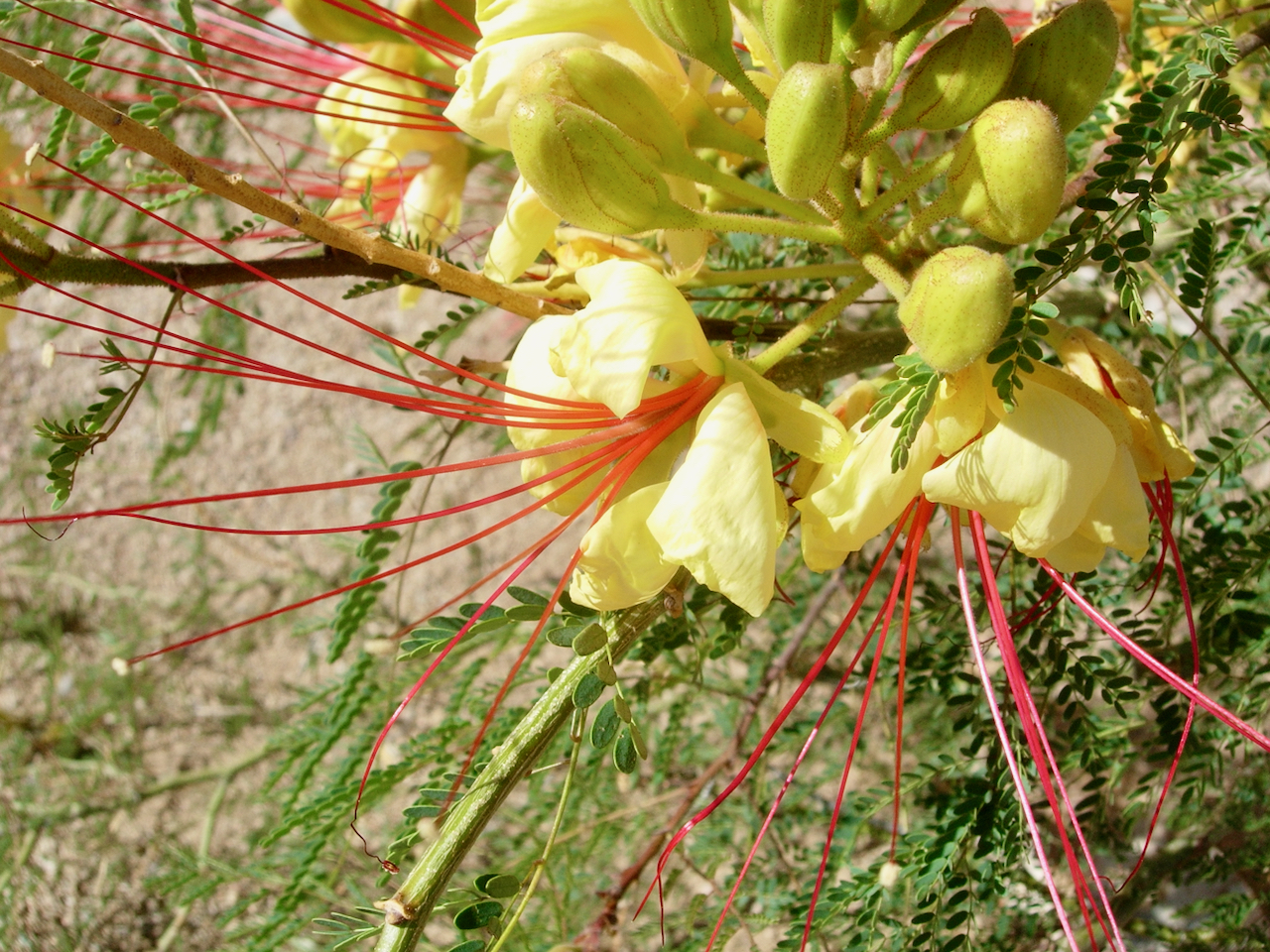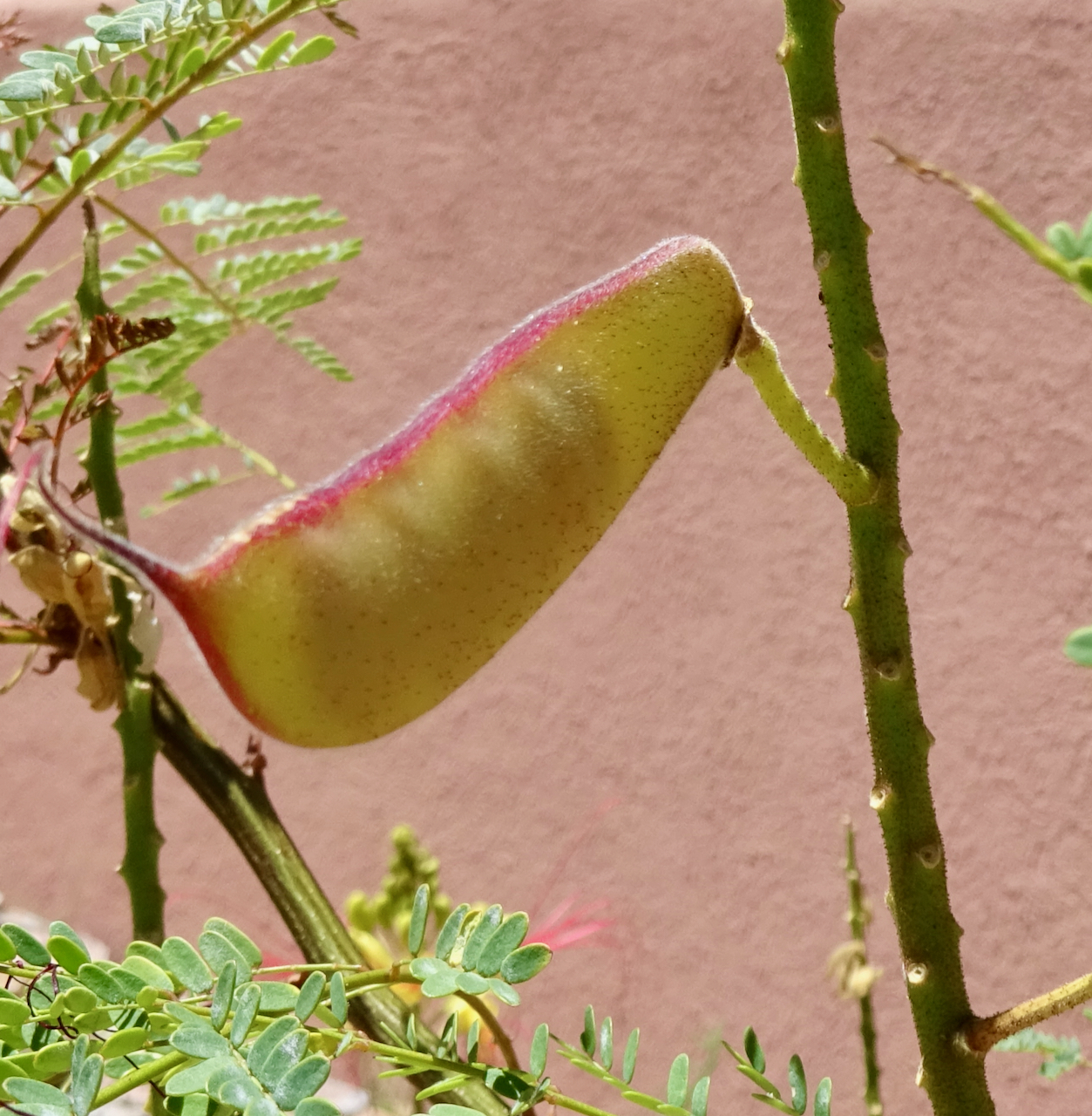Yellow Bird of Paradise
Erythrostemon gilliesii
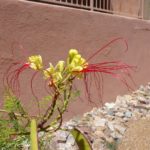
About the Plant
Please note: This plant is sometimes called Mexican bird of paradise or desert bird of paradise. These two names, as well as yellow bird of paradise, are sometimes given to other plants. Make sure to use the scientific name of this plant if you try to purchase it at a nursery.
Yellow bird of paradise, a shrub native to Argentina and Uruguay, has naturalized in parts of southern Arizona. It is cold-deciduous, dropping its leaves at about 25°F but otherwise hardy in our area. The large flowers are showy, with yellow petals and long, bright red stamens, appearing in May and continuing through the summer.
Yellow bird looks best and flowers more reliably if irrigated in summer. It has a naturally open form. Fertilization will increase fullness as will removing spent flower stalks. Otherwise, prune very lightly if at all. The wood is very brittle and the plant is slow to recover from heavy pruning.
CAUTION: seeds and pods are poisonous.
Notes:
- The previous scientific name for this plant was Caesalpinia gilliesii and that name may still be commonly used in the nursery trade.
- Yellow bird of paradise may reseed in the landscape and has become naturalized at numerous locations in the southwestern U.S.
- A completely unrelated plant - Strelitzia reginae - also goes by the name of "bird of paradise". It is used extensively in southern California and is the official flower of the City of Los Angeles.
- Two other plants grown in the Tucson area go by the name of "bird of paradise":
- Red bird of paradise - Caesalpinia pulcherrima. Distinguished by the many short, flexible spines on the stems.
- Mexican bird of paradise - Erythrostemon mexicanus. Distinguished from yellow bird of paradise by having short, green or yellow-green stamen rather than long, red stamen.
Wildlife value: attracts hummingbirds and possibly butterflies
More Information
Weekly Plant on birds of paradise
Horticultural information from ASU
Map of distribution in US (blue means plant is not native; light blue means the plant is found in those counties)
In books:
Trees and Shrubs for the Southwest by Mary Irish, page 140
ID Characteristics
Yellow bird of paradise is an open, irregular shrub that can grow to 10 feet and almost as wide but is often less (shrub in photo is about 5 feet).
The very newest growth is red but quickly changes to green. There are numerous white markings (lenticels). The stems have an appearance of vertical streaking as well and there are no thorns.
